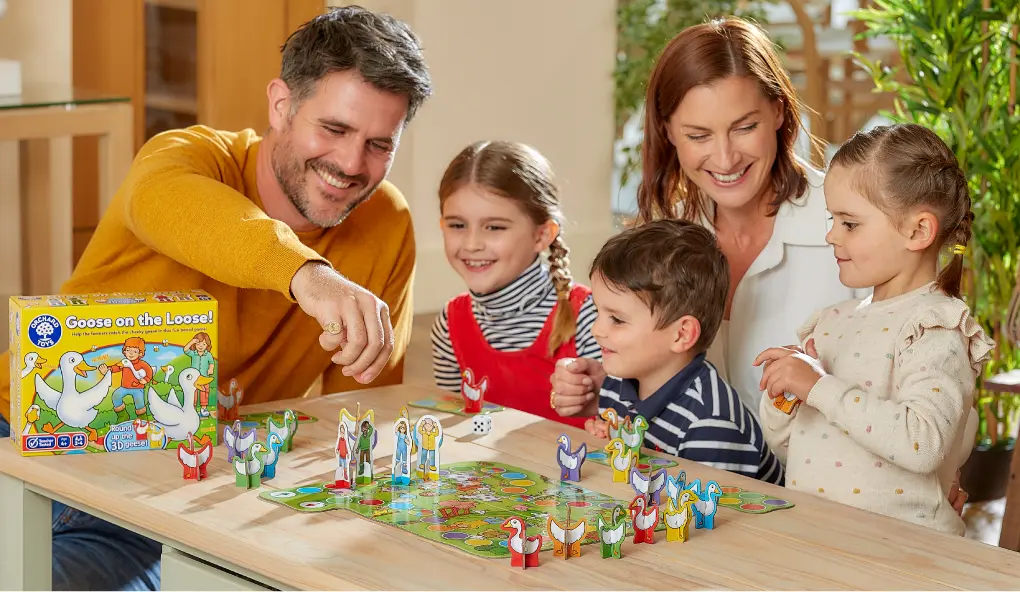Mastering Emotional Intelligence: 10 Parenting Techniques Explored
Harness the power of emotional intelligence in parenting with these 10 transformative techniques. Nurture empathy, validate emotions, and create a safe haven for open communication. Establish clear boundaries with empathy, practice active listening, and teach problem-solving skills. Encourage self-awareness, resilience, and healthy relationships. Model emotional regulation and respect individuality. Delve into these essential strategies to cultivate your child’s emotional intelligence effectively and strengthen your bond.
Key Takeaways
- Promote emotional awareness through open conversations.
- Foster empathy and understanding in parenting interactions.
- Encourage emotional regulation for healthy coping.
- Develop social skills through positive parent-child relationships.
- Model emotional intelligence for children to emulate.
Teaching Empathy

To foster empathy in your child, actively demonstrate kindness and understanding in your interactions with others. Empathy building begins with role-playing scenarios that challenge your child to step into someone else’s shoes. By engaging in these exercises, your child learns the importance of perspective-taking and develops a deeper understanding of diverse experiences.
Compassion training is essential in teaching empathy. Encourage your child to contemplate how their words and actions affect others. Discuss real-life situations where empathy could have made a difference, helping them grasp the impact of their behavior on those around them. Act as a role model by displaying empathy in your interactions, showcasing the power of understanding and kindness.
Through empathy-building activities and compassionate conversations, your child will learn to navigate complex emotions with sensitivity and care. By instilling these values early on, you equip them with the tools to build strong, meaningful relationships based on mutual respect and understanding.
Encouraging Emotional Expression
Encouraging your child to express their emotions openly is essential in fostering their emotional well-being.
By validating their feelings without judgment, you create a safe space for them to communicate openly.
Cultivating this environment of trust and understanding allows for healthy emotional growth and strengthens your parent-child bond.
Validate Feelings Openly
Expressing emotions openly can help children feel understood and supported in their experiences. Emotional validation is vital for a child’s mental health and well-being. When you acknowledge your child’s feelings, you create a supportive environment where they feel safe to express themselves freely. This validation teaches children that their emotions are valid and deserving of attention, fostering a healthy emotional intelligence foundation.
By openly validating your child’s feelings, you demonstrate empathy and understanding. This practice helps children develop a sense of self-worth and confidence in expressing their emotions. It also encourages them to regulate their feelings effectively, leading to improved emotional resilience and mental health outcomes.
Creating a safe space for emotional expression at home is essential for your child’s emotional development. When you openly validate their feelings, you strengthen your parent-child bond and nurture a trusting relationship built on empathy and support. Remember, your validation plays a significant role in shaping your child’s emotional well-being.
Foster Open Communication
Create an atmosphere where open communication thrives by actively listening to your child’s thoughts and feelings. Trust building is essential in fostering honest communication and building a strong connection with your child.
Encourage your child to express themselves freely without fear of judgment. Validate their emotions and show empathy towards their experiences. By being present and attentive when they talk, you convey that their words are valued, which in turn strengthens the trust between you.
To promote open communication, engage in meaningful conversations with your child regularly. Ask open-ended questions that invite them to share their thoughts and feelings. Acknowledge their perspectives and avoid dismissing their emotions.
By practicing active listening and being receptive to what they’ve to say, you create a safe space for open dialogue. This helps instill confidence in your child to express themselves authentically and fosters a deeper connection based on mutual understanding.
Cultivate Safe Environment
Establishing a safe environment for your child to freely share their emotions is essential in nurturing their emotional well-being and promoting healthy communication within the family. Creating a safe space where your child feels comfortable expressing their feelings without fear of judgment is important. When you cultivate trust within your family dynamics, it encourages emotional openness and strengthens the parent-child bond.
Building trust involves being present and attentive when your child communicates their emotions. Acknowledge their feelings without dismissing or invalidating them. Validate their experiences, even if you may not fully understand or agree with them. By doing so, you show your child that their emotions are respected and valued.
Encouraging emotional expression in a safe environment allows your child to develop a healthy understanding of their feelings and how to express them constructively. It fosters a sense of security and acceptance, laying the foundation for effective communication skills and emotional intelligence in the future.
Setting Healthy Boundaries

Developing clear and consistent boundaries is essential for fostering healthy relationships and promoting positive behavior in children. When establishing boundaries, it’s vital to strike a balance between being firm and empathetic.
Boundaries provide a sense of security and structure for your child, helping them understand limits and expectations. Consistency is key; children thrive when they know what to expect.
Setting healthy boundaries involves clearly communicating rules and consequences, ensuring they’re age-appropriate and reasonable. Be open to discussions about boundaries, allowing your child to express their thoughts while maintaining the final decision-making authority. This approach fosters trust and mutual respect within the parent-child relationship.
Practicing Active Listening
When it comes to effective parenting, practicing active listening is key.
By showing empathy in your listening, you create a safe space for your child to open up.
Paying attention to nonverbal cues and reflecting back their feelings can strengthen your bond and understanding with your child.
Empathy in Listening
To truly connect with your child, practicing active listening, which involves showing empathy in your interactions, can help foster a deeper understanding and strengthen your relationship. Empathy practice is essential in this process as it requires you to not only listen to your child’s words but also understand the emotions behind them.
When engaging in active listening, focus on truly hearing what your child is saying without interrupting or formulating your response while they speak. By demonstrating empathy through active listening, you show your child that their feelings are valid and important to you, creating a safe space for open communication. This practice helps build trust and encourages your child to express themselves freely.
Nonverbal Cues Importance
Understanding nonverbal cues is essential in practicing active listening with your child, as they often convey emotions that words alone may not express. Body language plays a significant role in communication, sometimes revealing more about a person’s feelings than what they say. By paying attention to your child’s body language, such as facial expressions, gestures, and posture, you can gain valuable insights into their emotional state. These emotional cues provide you with a deeper understanding of how your child is truly feeling, allowing you to respond more effectively to their needs.
When engaging in conversations with your child, remember to observe their nonverbal cues alongside their words. For instance, a tense posture or avoiding eye contact may indicate discomfort or unease, even if they claim everything is fine verbally. By being attuned to these signals, you demonstrate genuine interest in your child’s emotions and show that you’re fully present in the conversation. This level of attentiveness fosters a stronger connection and builds trust between you and your child.
Reflecting Back Feelings
How can reflecting back feelings enhance your active listening skills when interacting with your child?
When you mirror your child’s emotions by reflecting back their feelings, you show them that you understand and empathize with what they’re experiencing. This technique of validating experiences can deepen your connection with your child and help them feel heard and valued.
By actively listening and reflecting back feelings, you create a safe space for your child to express themselves openly.
When you acknowledge their emotions by mirroring them, you demonstrate that you’re present and engaged in the conversation. This practice can foster trust and strengthen your relationship with your child.
Reflecting back feelings also allows you to clarify any misunderstandings and ensure that you’re interpreting your child’s emotions accurately.
It helps you tune into their perspective, promoting effective communication and problem-solving. By validating their experiences through reflective listening, you encourage emotional intelligence and build a foundation of mutual respect within your parent-child relationship.
Teaching Problem-Solving Skills

When guiding your child in developing problem-solving skills, encourage them to approach challenges with a positive mindset and a willingness to explore different solutions. By teaching problem-solving techniques, emotional regulation, critical thinking, and conflict resolution, you equip your child with valuable tools to navigate life’s complexities.
Start by helping them identify the problem at hand. Encourage them to break it down into manageable parts, fostering critical thinking skills that will aid in finding effective solutions.
Teach your child to regulate their emotions during problem-solving. Emphasize the importance of staying calm and focused, as heightened emotions can cloud judgment and hinder the decision-making process. Encourage open communication and brainstorming of various solutions. Guide them in evaluating the pros and cons of each option, fostering their conflict resolution skills.
Model problem-solving behaviors yourself, demonstrating how to approach challenges with a positive attitude and a logical mindset. By instilling these skills early on, you empower your child to handle difficulties confidently and effectively throughout their life.
Modeling Healthy Emotional Regulation
When it comes to parenting techniques, modeling healthy emotional regulation plays a pivotal role in shaping your child’s emotional development. By openly expressing your own emotions in a healthy manner, you provide a valuable example for your child to learn from.
Additionally, teaching coping strategies equips your child with the tools needed to navigate their own emotions in a constructive way.
Parental Emotional Expression
Demonstrating healthy emotional regulation as a parent can greatly impact your child’s emotional development. By embracing your parental vulnerability and practicing emotional authenticity, you provide your child with a valuable model for managing their feelings in a healthy manner.
When you openly express your emotions in a constructive way, your child learns that it’s okay to feel and express their own feelings without fear of judgment.
Your emotional expression sets the tone for how your child understands and copes with their own emotions. Children are perceptive and observe how you handle stress, frustration, and joy, influencing their own emotional responses.
Teaching Coping Strategies
Modeling healthy emotional regulation is essential in teaching coping strategies to your child. By demonstrating how to manage stress effectively, practice self-care, and engage in mindfulness, you provide your child with valuable coping mechanisms for handling life’s challenges. Your child learns by observing your responses to difficult situations, so displaying healthy emotional regulation sets a powerful example.
Encourage your child to identify their emotions and express them in constructive ways. Teach them coping strategies like taking deep breaths, going for a walk, or journaling to process their feelings. Emphasize the importance of self-care activities such as getting enough sleep, eating well, and engaging in activities they enjoy to maintain emotional well-being.
Modeling healthy emotional regulation also involves showing your child how to manage stress through techniques like mindfulness and relaxation exercises. By incorporating these practices into your daily routine, you demonstrate the value of prioritizing mental and emotional health.
Encouraging Self-Awareness

To help your child develop self-awareness, engage in open conversations about their thoughts and feelings. Encouraging self-reflection fosters emotional balance and a deeper understanding of one’s emotions. By creating a safe space for your child to express themselves, you can help them explore their inner world and become more in tune with their emotions.
Encourage your child to identify and label their feelings. This can be done through simple questions like ‘How are you feeling today?’ or ‘Can you tell me more about what made you happy/sad/anxious?’ By helping them recognize their emotions, you’re laying the foundation for self-awareness.
Model self-awareness by openly discussing your own thoughts and feelings with your child. Share how you cope with different emotions and the importance of understanding oneself. This can inspire them to practice self-reflection and emotional awareness in their own lives.
Promoting Emotional Resilience
Encouraging your child to develop emotional resilience involves guiding them through challenges with a focus on growth and adaptability. Building resilience in your child is essential for their mental health and overall well-being. Providing emotional support during tough times can help them develop coping strategies that will serve them throughout their lives.
As a parent, you play an important role in helping your child navigate through difficult situations. Encourage open communication, validate their feelings, and teach them problem-solving skills. By fostering a safe and supportive environment, you can empower your child to face adversity with strength and resilience.
Teaching your child how to manage stress, regulate their emotions, and bounce back from setbacks will equip them with the tools needed to handle life’s challenges. Remember, promoting emotional resilience isn’t about shielding your child from difficulties but about helping them develop the skills to overcome them.
Cultivating Positive Self-Esteem
Developing positive self-esteem in your child is crucial for their overall well-being and success in life. Building confidence through positive reinforcement is a key aspect of nurturing self-esteem. Praise your child not just for achievements but also for efforts and progress, emphasizing the importance of perseverance.
Encouraging independence is another essential component. Allow your child to make decisions appropriate to their age, fostering a sense of autonomy and capability. Providing supportive guidance rather than hovering allows them to learn from their experiences and build self-assurance.
Children with positive self-esteem are more likely to handle challenges effectively and have a stronger sense of self-worth. By instilling belief in their abilities, you equip them with the resilience to face setbacks. Celebrate their uniqueness and encourage them to pursue their interests, helping them develop a strong sense of identity.
Nurturing Healthy Relationships

Fostering healthy relationships with your child is essential for their emotional development and overall well-being. Building trust and fostering connections are pivotal aspects of nurturing a strong parent-child bond. By creating bonds and promoting understanding, you lay a solid foundation for a positive relationship.
Communication plays an essential role in this process. Encourage open dialogue where your child feels valued and heard. Show empathy and understanding, even in challenging situations, to strengthen your connection.
Quality time spent together is invaluable for nurturing healthy relationships. Engage in activities that your child enjoys, and use these moments to deepen your bond. Express affection and support regularly to reinforce your love and care. Be a reliable presence in your child’s life, offering guidance and encouragement when needed.
Respect your child’s individuality and autonomy, allowing them to express themselves freely. By fostering a sense of security and acceptance, you create a safe space for your child to grow and thrive.
Frequently Asked Questions
How Can Parents Address Their Own Emotional Triggers?
To address your emotional triggers as a parent, focus on emotional regulation by identifying triggers and practicing self-awareness. Take time to understand your reactions, seek support when needed, and develop healthy coping strategies.
What Role Do Cultural Differences Play in Emotional Intelligence?
Understanding cultural differences is essential in emotional development. Cultural sensitivity impacts how emotions are expressed and understood. Parents, through modeling and respecting cultural norms, can help children navigate diverse emotional landscapes effectively, fostering empathy and emotional intelligence.
Is It Possible to Overemphasize Emotional Intelligence in Children?
Focusing too much on emotional intelligence in children can blur emotional boundaries, leading to potential developmental issues. Be mindful not to overload them with excessive emphasis on this aspect, allowing for a balanced approach to their emotional growth.
How Do Parents Balance Supporting Emotions and Discipline?
You can balance supporting emotions and discipline by setting empathy boundaries. Show understanding while reinforcing consistent rules. Acknowledge feelings but also teach accountability. This approach helps children learn emotional regulation and respect boundaries in a nurturing environment.
Can Emotional Intelligence Be Taught in a Classroom Setting?
In a classroom setting, emotional learning can be effectively taught. Utilizing methods like role-playing, discussions, and mindfulness exercises can help students understand and develop emotional intelligence. These approaches enhance classroom effectiveness and support emotional growth.
Conclusion
To sum up, mastering emotional intelligence in parenting is essential for raising well-rounded, emotionally healthy children. By incorporating techniques such as teaching empathy, encouraging emotional expression, setting boundaries, and promoting self-awareness, you can help your child navigate their emotions effectively.
Remember, building emotional intelligence takes time and patience, but the benefits are invaluable in helping your child develop strong relationships, problem-solving skills, and a positive sense of self. Keep practicing these techniques and watch your child flourish emotionally.

Hey there! 👋 I’m a proud mom and passionate writer, sharing my parenting journey. 📝 Join me as I navigate the ups and downs of motherhood, offering tips, advice, and a sprinkle of humor along the way. 🌟







